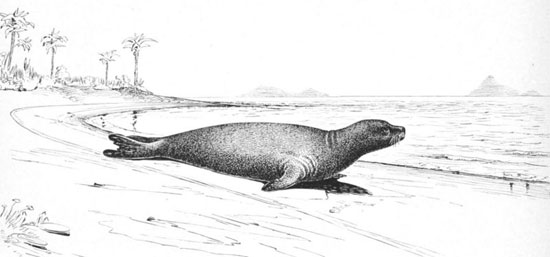
Photo from "The Fisheries and Fisheries Industries of the United States", by George Brown Goode (1887).
The Caribbean monk seal has gone "the way of the dodo" and been officially listed as extinct by the US Government. The Caribbean monk seal is, so far, the only seal species to go extinct due to human causes.
"Humans left the Caribbean monk seal population unsustainable after overhunting them, Unfortunately, this led to their demise and labels the species as the only seal to go extinct from human causes."
The last time anyone sighted the Caribbean monk seal was in 1952, over 50 years ago, at Seranilla Bank, between Jamaica and the Yucatan Peninsula. In 1967 the USA listed the species as endangered due to human activities.
"Caribbean monk seals were first discovered during Columbus’s second voyage in 1494, when eight seals were killed for meat," the fisheries service noted. "Following European colonization from the 1700s to 1900s, the seals were exploited intensively for their blubber, and to a lesser extent for food, scientific study and zoological collection. Blubber was processed into oil and used for lubrication, coating the bottom of boats, and as lamp and cooking oil. Seal skins were sought to make trunk linings, articles of clothing, straps and bags."
Unfortunately it seems that the Hawaiian and Mediterranean monk seals will go the same path as the Caribbean monk seal. Their biggest problems is "lack of food sources for young seals, entanglement in marine debris, predation by sharks, and loss of haul-out and pupping beaches due to erosion" and climate change (which is man-made).
"El Nino events, which cause storms similar to those expected to occur with increasing frequency as a result of climate change, drive marine debris closer to monk seal beaches and nearshore waters," it added. "Seal pups play with trash, which can lead to entanglement and eventual death. Increased numbers of Hawaiian monk seals have been found entangled in marine debris after El Nino events."
The Hawaiian seal population is expected to be around 1200 individuals. But that number is declining at a rate of 4%, every year. It is even worse for the Mediterranean monk seal that only has around 500 individuals.


Recommended Comments
Join the conversation
You can post now and register later. If you have an account, sign in now to post with your account.